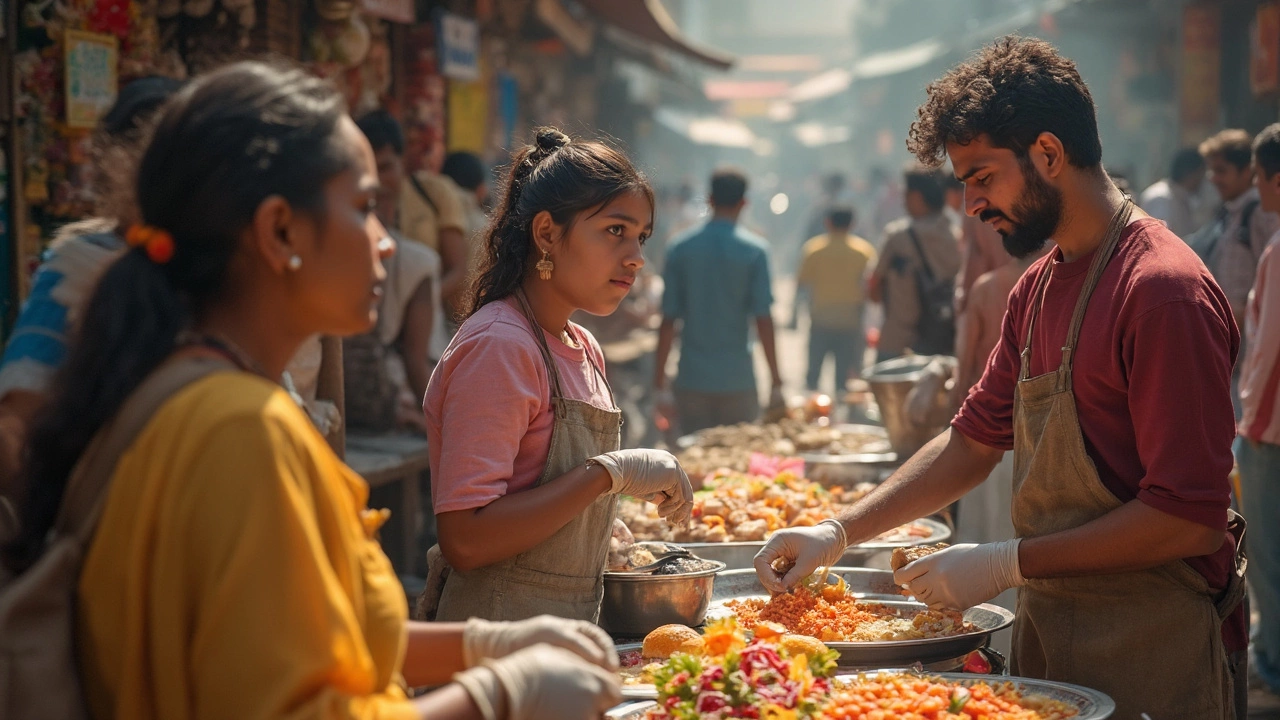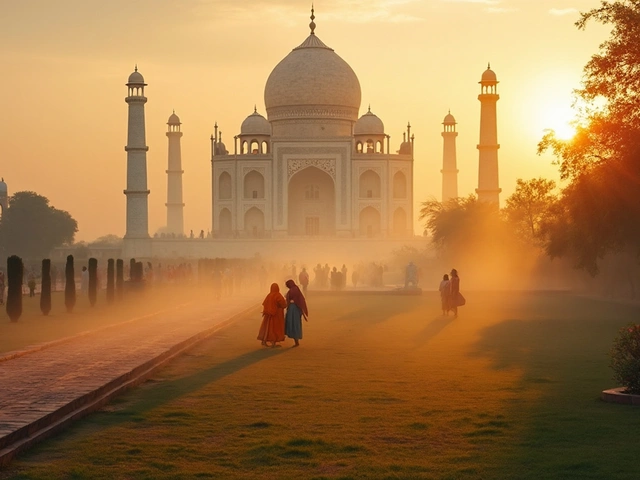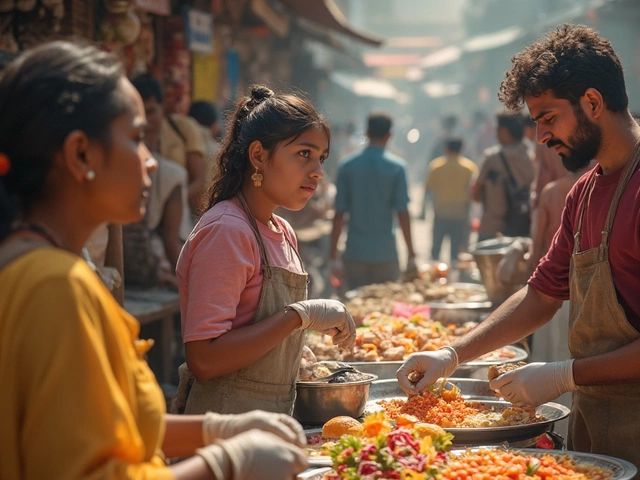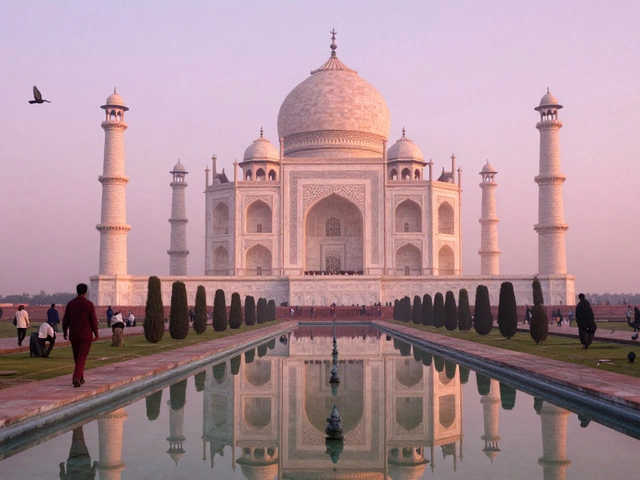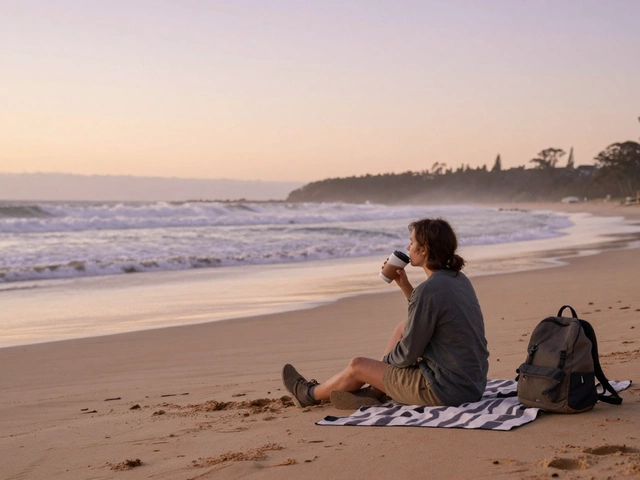Biting into a spicy samosa on a busy Indian street feels like an adventure, but nobody wants to end up spending days hugging the bathroom, right? India’s food scene is legendary, but it’s also notorious for giving unprepared travelers a rough time. There’s plenty you can do to avoid stomach troubles while still enjoying those bold flavors.
First off, don’t let fear hold you back from trying local food—it’s all about making smart choices. Always check how fresh the food looks and if locals are lining up. Busy stalls move food fast; that means less chance it’s been sitting out. When it comes to drinks, say a hard no to tap water, ice cubes, and anything that hasn’t been boiled or sealed. Bottled water is your best friend here, and yes, check if the seal is intact before you twist it open.
If you’re ever unsure about a dish, ask how it’s made or just stick to piping hot items. Heat usually kills anything nasty. Oh, and get into the habit of washing your hands before meals—soap and water work best, but hand sanitizer does the job too. Want to bring home only good memories (and not traveler’s tummy)? Keep reading for simple, real-life tips that actually work in India.
- Safe Sips: How to Handle Water and Drinks
- Street Food: Risks and Rewards
- Smart Choices at Restaurants
- Raw vs. Cooked: What’s Really Safe?
- Quick Fixes: What to Do if You Feel Sick
Safe Sips: How to Handle Water and Drinks
The fastest way to ruin your trip? Drink the wrong water. When it comes to India food safety, water is serious business. Tap water in India isn't safe for travelers—not for drinking, brushing teeth, or even rinsing your mouth. You might see locals drinking it, but their bodies are used to microbes that your body just isn’t ready for.
Bottled water is the safest option, but you have to check a few things. Look at the seal before you open it. If it’s been tampered with or looks reused, grab a different one. I can’t count the number of times my husband Caden has rescued a sketchy bottle from the hotel fridge and swapped it for a fresh one at a corner shop. Stick to big brands—Bisleri, Aquafina, Kinley—because they have tighter controls on their bottling.
- Always carry a bottle with you, especially if you plan to be out for hours.
- Avoid ice cubes. Most places use tap water, so even that fancy cocktail could spell trouble.
- Hot tea or coffee is usually fine because the boiling does the job of killing germs.
- Fizzy sodas are safer than still drinks poured over ice, but check that the seal snaps.
- Fresh juices are tempting, but if you watch them being made, make sure the fruit is peeled and the equipment looks clean. Still, skip juices with added water unless you're sure it's bottled or boiled.
The quick cheat-sheet for eating in India and staying healthy: No tap water, no ice, sealed bottles only. Even for brushing your teeth, it’s bottled water all the way. The old “my stomach can handle anything” line? You don’t win prizes for trying your luck. Safe drinks mean you’ll get more days actually enjoying your trip, not searching for a pharmacy.
| Drink | Safe? | What to Check |
|---|---|---|
| Bottled Water | Yes | Sealed, reputable brand |
| Chai/Tea (boiling hot) | Yes | Made fresh and piping hot |
| Fresh Juice (street) | No/Maybe | Water source, hygiene of vendor |
| Tap Water | No | Always unsafe for travelers |
| Ice Cubes | No | Likely made from tap water |
| Soda (bottled/canned) | Yes | Check the seal |
Street Food: Risks and Rewards
Indian street food is a flavor bomb and often super cheap, but honestly, it can be risky if you’re not careful. Places like Delhi, Mumbai, and Kolkata have famous food spots that even locals love. So, you don’t have to miss out—all you need is some common sense and a few street smarts.
The biggest problem with street food is hygiene. You’ve probably heard the stories—upset stomachs, Delhi belly, and every version of traveler’s diarrhea. But you can dodge most of that chaos if you follow some easy rules:
- Pick stalls that are busy. High turnover means the food hasn’t been sitting around.
- If you don’t see the food cooked fresh or steaming hot, skip it. Heat kills bacteria.
- Watch how the vendor handles money and food. Gloves, tongs, or clean hands are good signs.
- Go for fried or grilled street snacks over raw stuff like cut fruit or salads. Raw veggies and unpeeled fruit can carry germs from contaminated water or hands.
- Dishes with yogurt or uncooked sauces are risky if you're not sure of the water source.
- If your gut says no, just walk away—there’s always another stall around the corner.
Here’s a quick side-by-side of popular Indian street foods so you can decide what’s worth the risk:
| Street Food | Typical Risks | How to Stay Safe |
|---|---|---|
| Gol Gappa/Pani Puri | Contaminated water | Try only at super-popular places; watch if mineral water is used |
| Bhel Puri | Raw ingredients, chutneys with water | Choose versions made fresh in front of you, avoid wet chutneys |
| Samosa | Minimal; fried hot | Eat freshly fried, piping hot samosas |
| Kebabs | Sometimes reheated | Opt for skewers being cooked right there |
If you want to play it extra safe, stick to vegetarian options—meat and seafood have a higher risk of contamination, especially in hot weather. Also, trust your own senses: does the food smell right? Does the stall look clean? Locals are usually pretty sharp about which vendors are the real deal.
The bottom line: Eating in India is about enjoying the experience but also being cautious. Don’t let horror stories keep you from something awesome. Armed with these tips, you'll be ready to taste the best and stay in top shape.
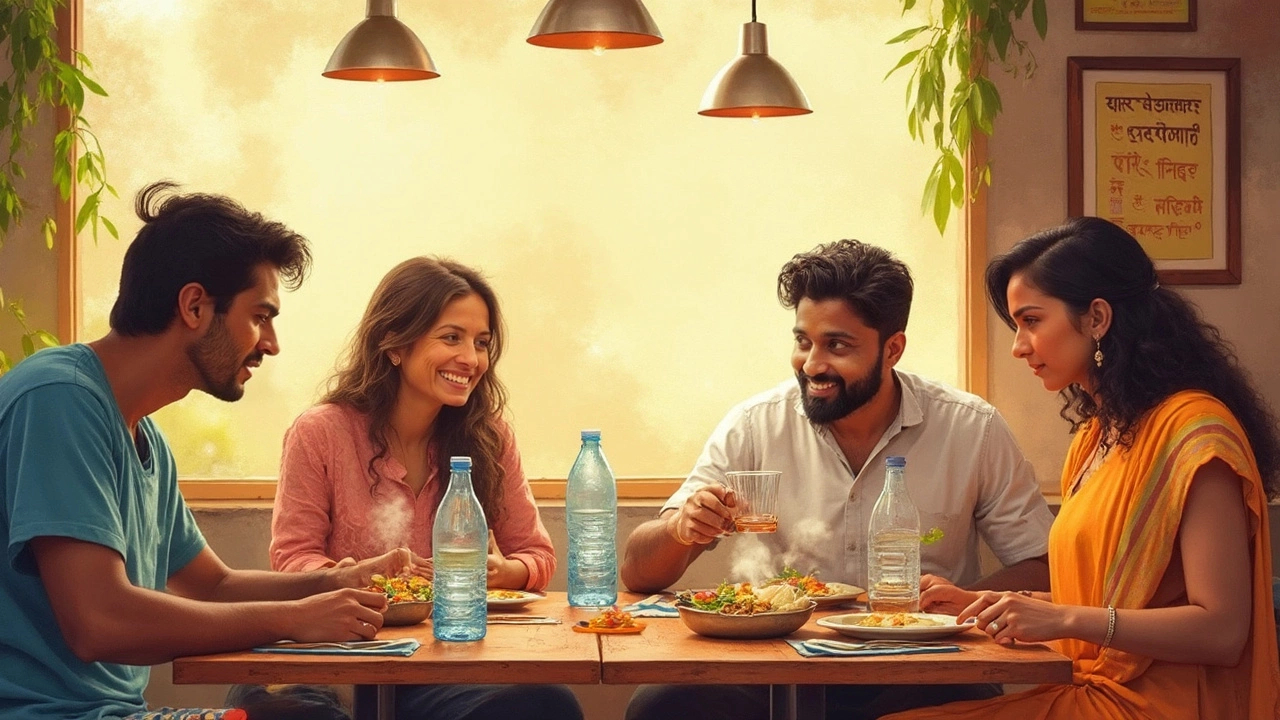
Smart Choices at Restaurants
Walking into a restaurant in India might feel safer than grabbing food from a street cart, but it’s not a free pass. Even the most impressive menus can hide sketchy food practices, so a little caution goes a long way. Here’s how to be smart and really enjoy those local flavors without regretting it later.
- Check out the crowd. A busy place full of locals usually means the food safety standards are solid and the kitchen’s cranking out fresh stuff. If an eatery is oddly empty at prime time, skip it.
- Spotless matters. Peek at the tables, floors, and especially the washroom. If the restrooms are a mess, chances are, the kitchen doesn’t get better treatment.
- Ask for bottled water, not tap. Even in nice restaurants, tap water (and ice) can do you in. Always ask for sealed bottled water and say no to anything that’s already open.
- Order cooked-to-order dishes. Go for stuff that’s freshly cooked and piping hot. Avoid buffets and anything sitting under heat lamps, especially if you’re eating later in the day.
- Don’t be shy to ask questions. If you’re not sure what’s in the food or how it’s prepared, just ask. Waiters in touristy spots are used to it—weird questions are part of their day.
- Be smart with salads and fruit. Most fruits with skins you can peel are okay. But unless you know veggies and fruit have been washed with safe water, skip raw salads and garnishes.
Here’s something many travelers don’t realize: according to the Food Safety and Standards Authority of India, about 30% of reported foodborne illnesses happen at sit-down restaurants, not just street stalls. That means your India food safety habits matter everywhere you eat.
| What to do | Why |
|---|---|
| Choose busy places | Higher food turnover, fresher meals |
| Eat cooked food | Heat kills bugs and bacteria |
| Use bottled water | Avoid contaminated tap supply |
| Check bathrooms | Clean restrooms hint at good kitchen hygiene |
Sticking with these simple steps doesn’t mean missing out. You get to enjoy a full meal, experience local flavors, and keep your stomach drama-free.
Raw vs. Cooked: What’s Really Safe?
This part can make or break your trip: should you trust that fresh fruit salad or that sizzling paneer tikka? Here’s the hard truth—cooked food is almost always safer in India. High heat kills most bad stuff like bacteria, viruses, and parasites. If it’s smoking hot or made right in front of you, you’re usually good to go.
Raw foods are where most travelers slip up. Washed in local, untreated water? That’s asking for trouble. Even a simple lettuce leaf could leave you regretting your lunch choices for the next three days. If you really crave fruit or salad, pick stuff with thick skins—think bananas, oranges, and mangoes. Stuff you can peel yourself is your best bet.
- Stick with freshly cooked dishes. If you see food just sitting in trays, give it a pass.
- Avoid anything cold that hasn’t been boiled or cooked right before serving—it’s a common cause of India food safety fails.
- Fruit and veggies: only eat if you can peel them yourself, or if you brought them from a safe place (like a high-end hotel).
- Dairy is tricky. Only try yogurt (curd) or milk if it’s clearly marked pasteurized, or you saw the chai wallah boil it up for your tea.
Here’s a quick checkpoint that my spouse Caden and I always use: if the locals avoid it raw, you probably should, too.
| Food Type | Risk Level (for travelers) | Best Option |
|---|---|---|
| Raw leafy vegetables | High | Avoid |
| Peeled fruits | Low | Safe if peeled by you |
| Street grilled meats | Medium to Low | Eat if freshly cooked |
| Salads | High | Avoid unless sure of water source |
| Cooked curries | Low | Safe when hot |
Don’t forget the basics: hot food is safer, and anything raw—unless you’ve handled it yourself—is a gamble. Want to make the most of your Indian food adventure? Ask about the prep, watch the cooking, and when in doubt, cook counts.
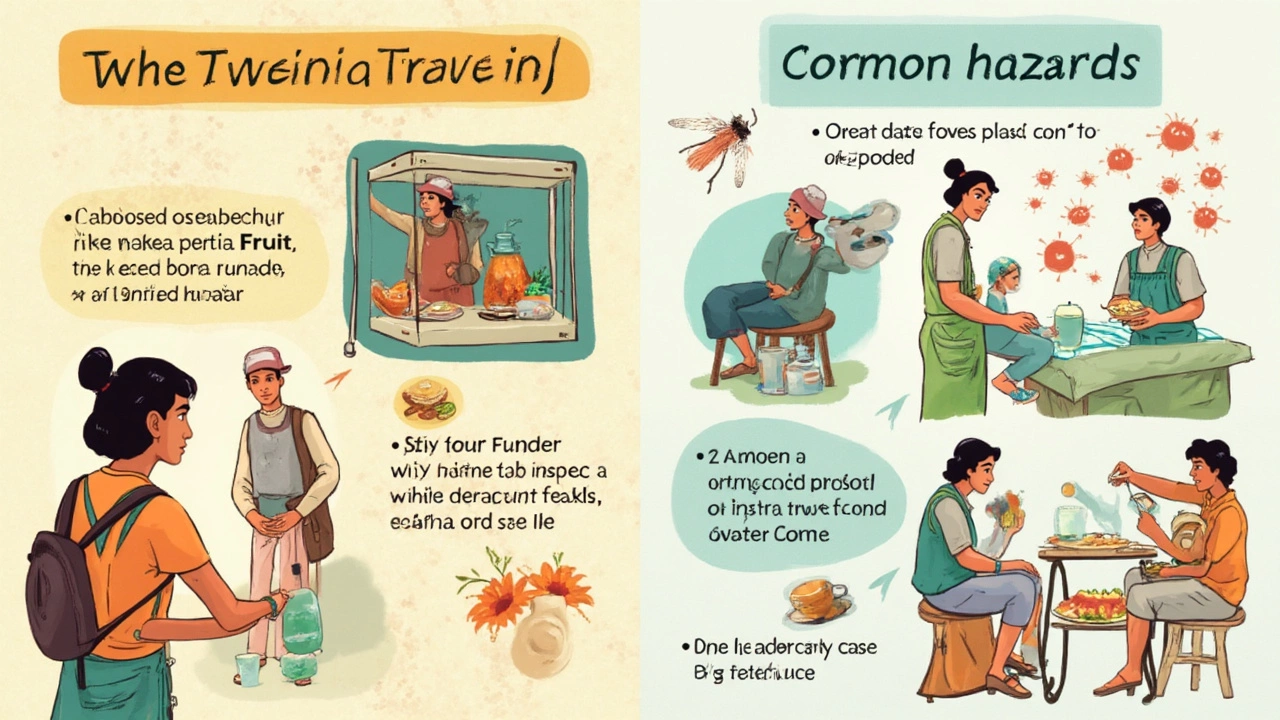
Quick Fixes: What to Do if You Feel Sick
No matter how cautious you are with India food safety, stomach bugs can still crash your trip. If you start to feel queasy or get the classic "Delhi belly," don’t panic—most cases are mild and will pass within a couple of days. Here’s what actually helps:
- Stay Hydrated: Diarrhea and vomiting can leave you dehydrated fast. Stick to bottled water and drink small sips often. Oral rehydration salts (ORS) are sold at most pharmacies and work way better than sports drinks.
- Easy on Food: Give your stomach a break. Eat simple things like plain rice, bananas, boiled potatoes, or toast. Avoid spicy or oily dishes until you’re back to normal.
- Medicines: Carry basic meds like Imodium (loperamide) for short-term relief and paracetamol for fever. If your symptoms go on for more than 48 hours, or if you have a high fever or blood in your stool, see a doctor fast.
- Find a Doctor: There's no shame in visiting a local doctor—private clinics in big cities are usually quick and professional. Keep your travel insurance info handy in case you need something more serious.
- Rest: It sounds obvious, but don’t push through if you’re not feeling well. Skip the sightseeing and focus on recharging.
If you want a rough idea, here’s what most travelers experience, based on a CDC 2023 summary:
| Issue | Average Recovery Time | % of Travelers Affected |
|---|---|---|
| Mild Diarrhea | 1-3 days | 20-40% |
| Vomiting | 1-2 days | About 15% |
| Fever (with stomach issues) | 1-3 days | Less than 10% |
So yeah, you’re not alone if you get sick. It's super common for first-time visitors in India. Just use those eating in India tips, and if you do get knocked down, these simple steps get you back on your feet faster.
